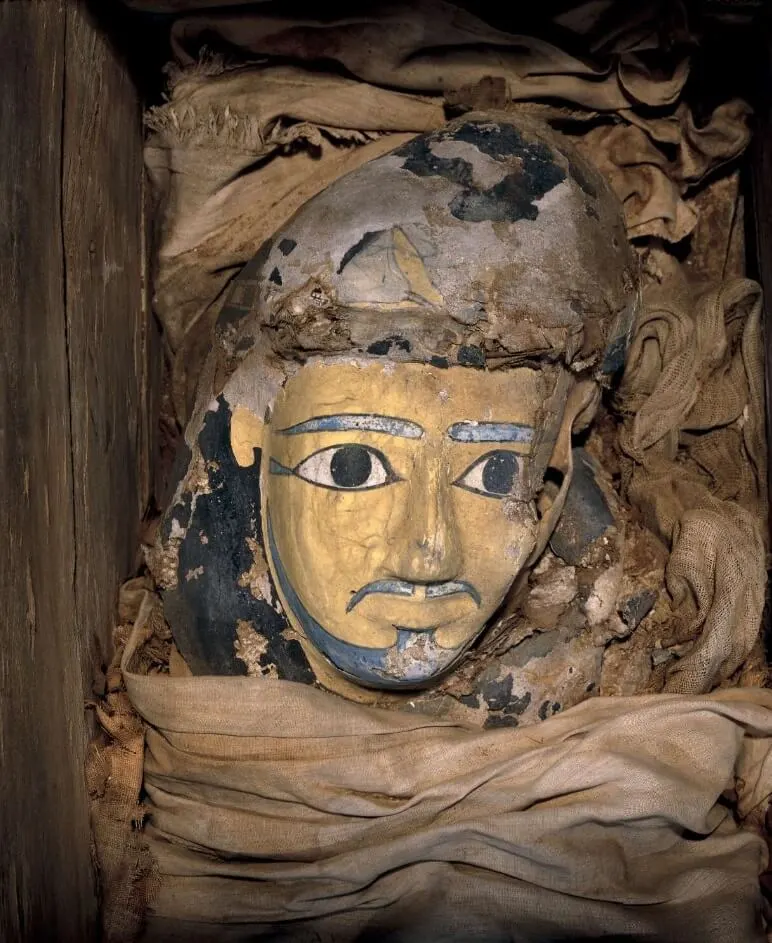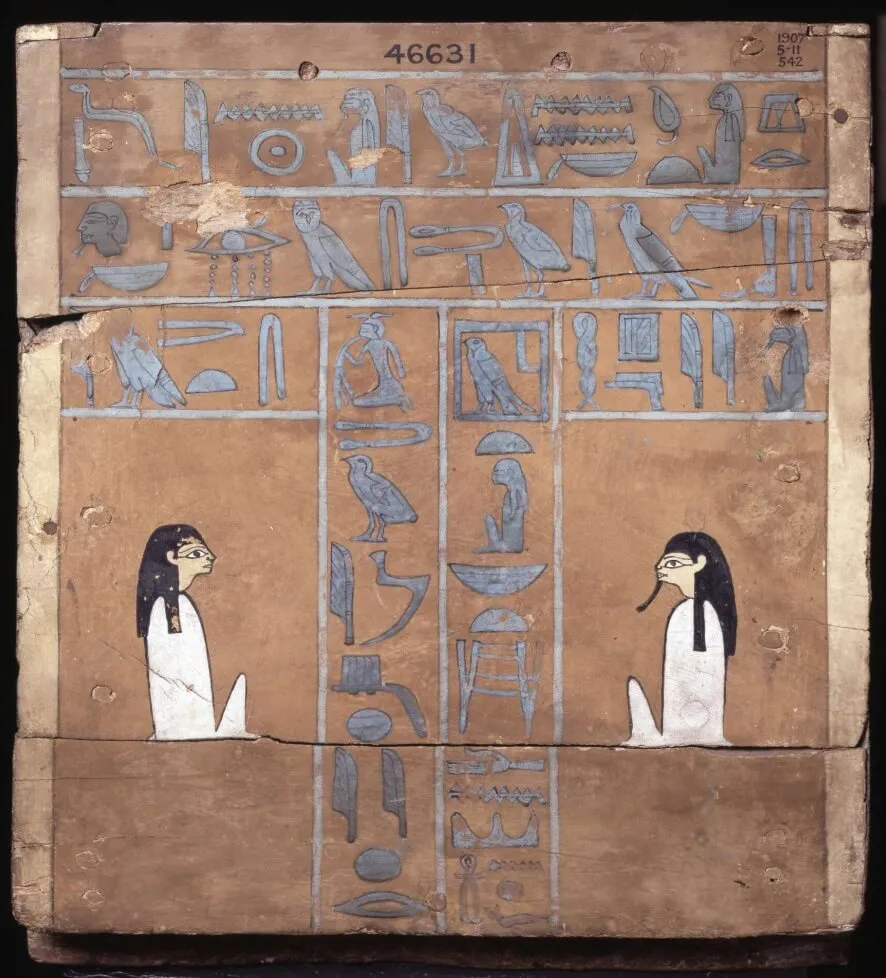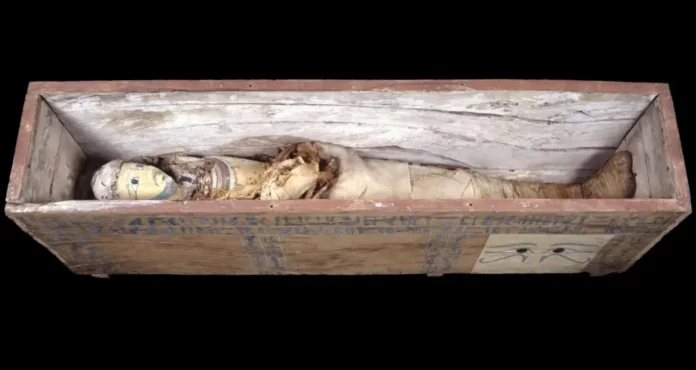In the ancient city of Asyut, Egypt, a discovery was made that would shed light on the region’s rich history and its funerary customs. The mummy of a man named Ankhef was unearthed by Dr. David George Hogarth, revealing fascinating insights into life and death in the Middle Kingdom of Egypt.
Asyut, known as the capital of the Thirteenth Nome of Upper Egypt around 3100 B.C., was situated on the western bank of the Nile. The city was deeply intertwined with its religious beliefs, primarily worshipping the funerary deities Anubis and Wepwawet, both depicted in canine form. Within the chambers carved into the adjacent rocks, the discovery of wolf mummies confirmed the city’s connection to these deities and supported a legend recorded by Diodorus Siculus. According to this tradition, an Ethiopian army invading Egypt was repelled beyond the city of Elephantine by packs of wolves, emphasizing the sacred status of these animals.

British Museum. EA4663
In the city, Osiris was venerated in the form of a wolf at Lycopolis. Mythology recounts that Osiris emerged “from the shades” as a wolf to aid Isis and Horus in their battle against Typhon. The ancient monuments of Asyut include the necropolis west of the modern city, with tombs dating back to the Ninth, Tenth, and Twelfth Dynasties, as well as the Ramessid tombs of Siese and Amenhotep.
The city’s name, Asyut, has evolved through the ages. Derived from the early Egyptian Zawty (Z3JW.TJ) and later Səyáwt, it was adopted into Coptic as Syowt, meaning “Guardian” of the northern approach to Upper Egypt. In Graeco-Roman times, it was known as Lycopolis, or “wolf city.”
Ankhef’s mummy, discovered in this historic city, dates from the 11th-12th Dynasty of the Middle Kingdom, approximately 2000-1980 B.C. Encased in a painted wooden coffin adorned with hieroglyphic funerary spells, Ankhef’s remains are a testament to the elaborate burial practices of the time.

However, the British Museum reports that Ankhef’s mummy is in a rather poor state. His head, chest, and abdomen are “completely disorganised,” with a dislocated jaw described as “edentulous,” meaning “lacking teeth.” Scattered teeth were found throughout his body, with two near his pelvis and one near his upper chest. His ribs are disarticulated, and there are signs of osteoarthritis in his left hip.
X-ray scans revealed a poignant detail: Ankhef’s mummy has no visible amulets. These precious stone tokens were believed to protect and provide prosperity for the deceased on their journey to the Afterlife. Amulets, sometimes tiny figures of gods or icons like the human heart, were often placed within or upon the body during mummification, especially if an organ was missing or damaged.

A curious aspect of Ankhef’s appearance is his facial hair. While it is generally believed that Egyptians were clean-shaven, archaeological evidence suggests otherwise. Royal mummies with hair have been discovered, and depictions of men with beards and moustaches exist. The priesthood, known for their cleanliness, typically removed facial and head hair. Yet, depictions of Old Kingdom kings with pencil moustaches and Middle Kingdom men with beards indicate that facial hair was not entirely uncommon. A notable depiction of Seti I from the New Kingdom shows the king with a stubbled face, suggesting he was in mourning.
Similar mummy masks to that of Ankhef have been found in Asyut, dating from the same period. One such mask, belonging to a high official, is currently displayed at The Walters Art Museum.
In conclusion, the discovery of Ankhef’s mummy in Asyut not only provides a glimpse into the ancient Egyptian practices of mummification and burial but also enriches our understanding of the city’s religious and cultural significance. The intricate details of Ankhef’s life and the traditions of his time are preserved through his mummified remains, offering a tangible connection to the distant past.
Source: https://egypt-museum.com/ankhef/




